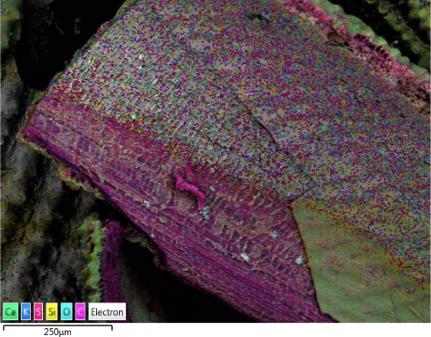Turning Trash Into Treasure: How scientists are using peanut shells and rice husks to clean up toxic mercury in our environment
By Tyjaha Steele

In the wake of Hurricane Helene and the recent flooding across the Southeast, it is crucial to understand the environmental impact of such events. Flooding historically causes sediment disruption which spreads harmful contaminants like mercury. These events can allow for toxic levels of mercury to enter the food web, posing serious risks to wildlife and humans. Researchers at the University of Georgia’s Savannah River Ecology Laboratory (SREL) have developed a promising solution to remediate this issue using biochar, a carbonized byproduct of organic waste. When added to contaminated soil, biochar can reduce the harmful effects of mercury, especially in flooded areas.
Natural soil samples were collected for testing from the Phinizy Center for Water Sciences and Phinizy Swamp Nature Park in Augusta, Georgia. Mesocosms, enclosed environments designed to replicate natural ecosystem conditions, were used to simulate flooding conditions on a smaller scale. The soil sediment was then enriched with inorganic mercury, mercury that has been combined with other chemical elements, to mimic a pollution event before it was left to sit for 28 days.
Different types of biochar, either rice husk or peanut hull, unmodified or modified with sulfur, were added to the soil, and the mesocosms were flooded to observe the effects of water on the polluted soil.
“Peanut hull and rice husk were chosen due to their wide availability and established background research,” explains Xiaoyu Xu, an assistant research scientist at the University of Georgia’s Savannah River Ecology Laboratory and lead researcher for this study.
The soil then sat to adjust again for 28 days. Afterward, the soil’s chemical properties were measured to see how they changed, and samples were collected to see how much total mercury, labile mercury, and organic mercury (toxic methylmercury) remained. Researchers then reviewed how each type of biochar, applied at different application rates, affected the amount of mercury that became more toxic over time.
The measurements were repeated at 28-day intervals (56 and 84 days after biochar application) to monitor changes in its effectiveness over time and to determine the most efficient application method. Researchers discovered that sulfur-modified rice husks, applied between 56 and 84 days, worked best in stabilizing labile mercury in contaminated floodplains. Success was determined based on decreases in total mercury and labile mercury concentrations, and a reduction in methylmercury.
“Overall, we found that adding biochar reduced the amount of mercury that can easily move and react in the environment by bonding with smaller particles, making the mercury more stable and less harmful,” states Xu. “However, adding large amounts of sulfur-modified biochar unexpectedly increased the production of toxic methylmercury.”
The ability of biochar to stabilize mercury is especially critical as extreme weather events like Hurricane Helene highlight the risks associated with flooding. Heavy rainfall and floodwaters can redistribute harmful metals like mercury that are associated with health concerns in humans. The research findings suggest that using biochar could offer a sustainable and scalable solution for remediating contaminated sites. This method repurposes agricultural waste that would otherwise be discarded and reduces the mobility and toxicity of mercury. As a result, it lowers the risk of mercury entering the food chain and causing health issues.
More research is needed to understand how sulfur-modified biochar affects methylmercury levels over time. “This approach shows promise as an environmentally friendly and cost-effective way to use organic byproducts to tackle mercury contamination,” Xu adds.
The original article was published in the Journal of Environmental Quality by Brittany E. Jensen, Breanna Spencer, and Xiaoyu Xu.
